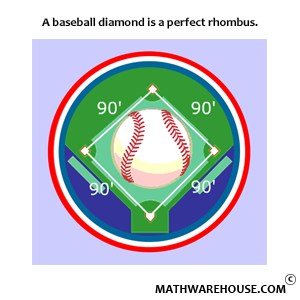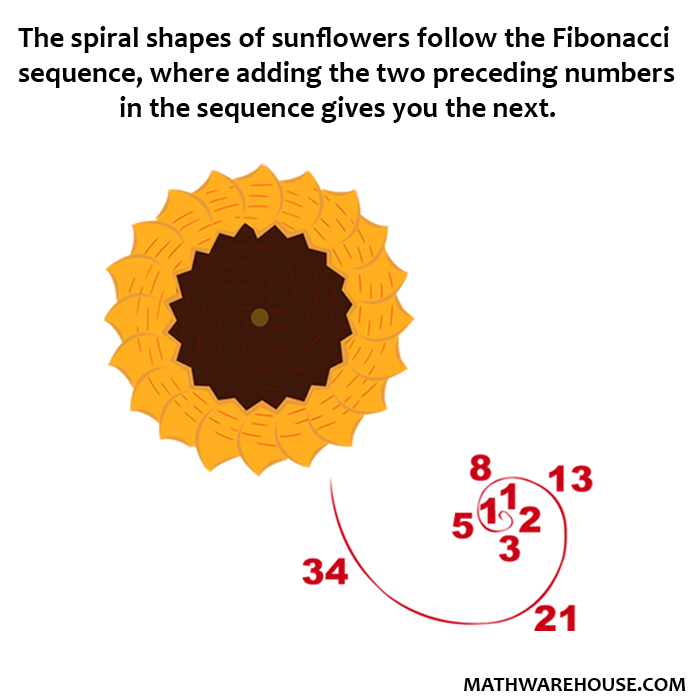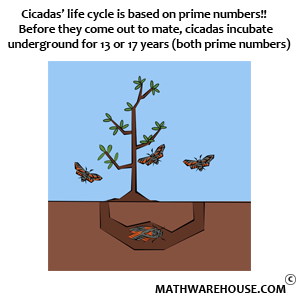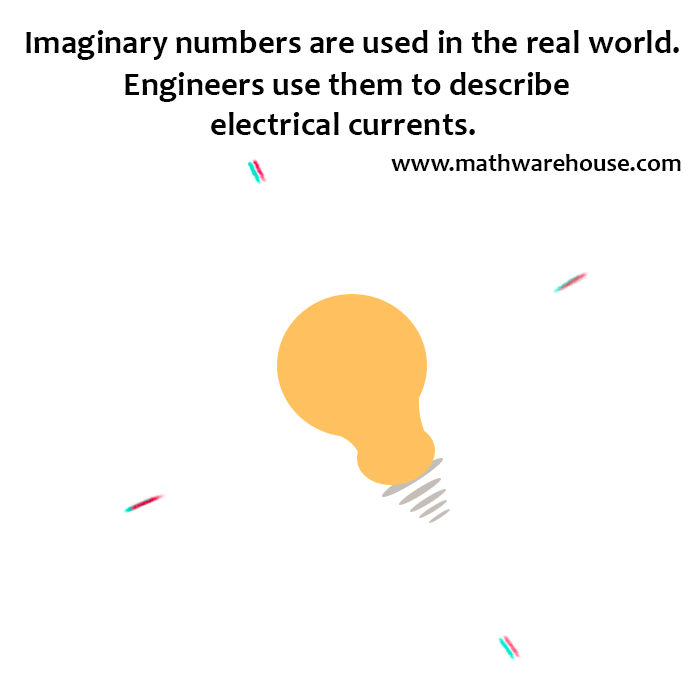Evaluate the limit in its current form.
$$ \displaystyle\lim_{x\to 0^+} x^x = 0^0 $$
This is probably the most basic of all of functions that have an indeterminate exponent form in the limit. A good question to start our practice with.
Rewrite the limit using the exponential and natural log functions, and pass the limit into the exponent of $$ e $$.
$$ \begin{align*} \lim_{x\to 0^+} \blue{x^x} % & = \lim_{x\to 0^+} e^{% \ln\left(% \blue{x^x} \right) } && \blue u = e^{% \ln\blue u } \\[6pt] % & = e^{% \lim_{x\to 0^+} \ln\left(% x^x \right)} && \text{Pass the limit into the exponent} \end{align*} $$
Focus on just the exponent of $$ e $$. Simplify using the properties of logarithms and re-evaluate the limit.
$$ \begin{align*} \lim_{x\to 0^+} \ln\left(% \red x^{% \blue x } \right) % & = \lim_{x\to 0^+} \blue x\cdot \ln \red x && \text{Property of Logarithms} \\[6pt] % & = \blue 0\cdot \red{% \ln 0 } \\[6pt] % & = \blue 0 \cdot \red{% (-\infty) } \end{align*} $$
Rewrite the function so the limit has the $$\frac \infty \infty$$ form.
$$ \begin{align*} \lim_{x\to 0^+} \blue x \cdot \red{% \ln x } % & = \lim_{x\to 0^+} \frac{% \red{% \ln x } } {% \blue{1/x} } \\[6pt] % & = \frac{% \red{% \ln 0 } } {% \blue{1/0} } \\[6pt] % & = \frac{% \red{-\infty} } {% \blue \infty } \end{align*} $$
Apply L'Hôpital's rule and re-evaluate the limit.
$$ \begin{align*} \lim_{x\to 0^+} \frac{% \ln x } {% 1/x } & = \lim_{x\to 0^+} \frac{% \red{% \frac d {dx} \left(% \ln x \right) } } {% \blue{% \frac d {dx} \left(% x^{-1} \right) } } \\[6pt] % & = \lim_{x\to 0^+} \frac{% \red{1/x} } {% \blue{% -x^{-2} } } \\[6pt] % & = \lim_{x\to 0^+} \frac{% \red{1/x} } {% \blue{% -1/x^2 } } \\[6pt] % & = \lim_{x\to 0^+} \red{% \frac 1 x } \cdot \blue{% \left(% -\frac{x^2} 1 \right) } \\[6pt] % & = \lim_{x\to 0^+} -x \\[6pt] % & = 0 \end{align*} $$
Go back to the original limit and evaluate it, using the values we found.
$$ \begin{align*} \lim_{x\to 0^+} x^x & = e^{% \blue{% \lim\limits_{x\to 0^+} x\ln x} } && \text{ from Step 3 } \\[6pt] % & = e^{% \blue 0 } && \text{ from Step 5 } \\[6pt] % & = 1 \end{align*} $$
$$ \displaystyle \lim_{x\to 0^+} x^x = 1 $$
For reference, here is the graph of the function with the limit value indicated.

Evaluate the limit in its current form.
$$ \displaystyle\lim_{x\to \infty} \blue x^{% \red{% \arccot x } } % = \blue \infty^{% \red{% \arccot \infty } } % = \blue \infty^{% \red 0 } $$
Rewrite the limit using the exponential and natural log functions, and pass the limit into the exponent of $$ e $$.
$$ \begin{align*} \lim_{x\to \infty} \blue{% x^{% \arccot x } } % & = \lim_{x\to \infty} e^{% \ln\left(% \blue{% x^{% \arccot x } } \right) } && \blue u = e^{% \ln\blue u } \\[6pt] % & = e^{% \lim_{x\to \infty} \ln\left(% x^{% \arccot x } \right) } && \text{Passing the limit into the exponent.} \end{align*} $$
Focus on just the exponent of $$ e $$. Simplify using the properties of logarithms and re-evaluate the limit.
$$ \begin{align*} \lim_{x\to \infty} \ln\left(% x^{% \arccot x } \right) % & = \lim_{x\to \infty} \blue{% \arccot x } \cdot \red{% \ln x } && \text{Properties of Logarithms} \\[6pt] % & = \blue 0 \cdot \red{% (-\infty) } \end{align*} $$
Rewrite the function so the limit has the $$\frac \infty \infty$$ form.
$$ \begin{align*} \lim_{x\to \infty} \blue{% \arccot x } \cdot \red{% \ln x } & = \lim_{x\to \infty} \frac{% \red{% \ln x } } {% \blue{% 1/\arccot x } } \\[6pt] % & = \frac{% \red{% \ln \infty } } {% \blue{% 1/\arccot (\infty) } } \\[6pt] % & = \frac{% \red \infty } {% \blue{1/0} } \\[6pt] % & = \frac{% \red{% -\infty } } {% \blue \infty } \end{align*} $$
Use L'Hôpital's rule then re-evaluate the limit.
$$ \begin{align*} \lim_{x\to \infty} \frac{% \ln x } {% 1/\arccot x } % & = \lim_{x\to \infty} \frac{% \red{% \frac d {dx} \left(% \ln x \right) } } {% \blue{% \frac d {dx} \left(% \arccot x \right)^{-1} } } \\[6pt] % & = \lim_{x\to \infty} \frac{% \red{1/x} } {% \blue{% -(\arccot x)^{-2} \cdot \frac{-1}{1 + x^2} } } \\[6pt] % & = \lim_{x\to \infty} \red{% \frac 1 x } \cdot\blue{% \frac 1 {% \frac 1 {% (\arccot x)^2 (1 + x^2) } } } && \text{Simplifying} \\[6pt] % & = \lim_{x\to \infty} \frac 1 x \cdot (\arccot x)^2 (1 + x^2) \\[6pt] % & = \lim_{x\to \infty} \frac{1 + x^2} x \cdot (\arccot x)^2 \end{align*} $$
To evaluate the limit efficiently, we're going to first simplify the rational factor and then distribute the inverse cotangent.
$$ \begin{align*} \lim_{x\to \infty} \frac{1 + x^2} x \cdot (\arccot x)^2 % & = \lim_{x\to \infty} \left(% \frac 1 x + x \right) \cdot (\arccot x)^2 \\[6pt] % & = \lim_{x\to \infty} \left(% \frac 1 x + x \right) \cdot (\arccot x)^2 \\[6pt] % & = \lim_{x\to \infty} \left(% \frac 1 x \cdot (\arccot x)^2 + x (\arccot x)^2 \right) \\[6pt] % & = \lim_{\blue{x\to \infty}} \left(% \frac 1 {\blue x} \cdot (\arccot \blue x)^2 + \blue x (\arccot \blue x)^2 \right) \\[6pt] % & = \frac 1 {\blue \infty} \cdot (\arccot \blue \infty)^2 + \blue \infty (\arccot \blue \infty)^2 \\[6pt] % & = \blue 0 \cdot \blue 0 + \blue \infty (\blue 0) \\[6pt] % & = \infty \cdot 0 \end{align*} $$
Yup! Another indeterminate.
We'll need to use L'Hôpital's rule again, but only for the $$ x(\arccot x)^2 $$ part (since the other part went to zero).
$$ \begin{align*} \lim_{x\to \infty}x \cdot (\arccot x)^2 % & = \lim_{x\to \infty} \frac{% (\arccot x)^2 } {% 1/x } \\[6pt] % & = \lim_{x\to \infty} \frac{% \blue{% \frac d {dx} \left(% \arccot x \right)^2 } } {% \red{% \frac d {dx} \left(% x^{-1} \right) } } \\[6pt] % & = \lim_{x\to \infty} \frac{% \blue{% 2\arccot x \cdot \frac 1 {1 + x^2} } } {% \red{% -x^{-2} } } \\[6pt] % & = \lim_{x\to \infty} \blue{-2\arccot x\cdot \frac 1 {1+x^2}}\cdot \red{x^2} \\[6pt] % & = \lim_{x\to \infty} -2\arccot x\cdot \frac{x^2}{1+x^2} \\[6pt] % & = -2\arccot \infty \cdot 1 \\[6pt] & = -2(0)\\[6pt] & = 0 \end{align*} $$
Evaluate the original limit using the values we've found.
$$ \begin{align*} \lim_{x\to \infty} x^{\arccot x} % & = \lim_{x\to \infty} e^{% \blue{% \ln\left(% x^{\arccot x} \right) } } \\[6pt] % & = e^{\blue 0} \\[6pt] % & = 1 \end{align*} $$
$$ \displaystyle \lim_{x\to \infty} x^{\arccot x} = 1 $$
For reference, here is the graph of the function.

Evaluate the limit in its current form.
$$ \displaystyle\lim_{x\to 1^-} x^{% \tan\left(% \frac \pi 2 x \right) } % = 1^{% \tan\left(% \frac \pi 2 \right) } % = 1^\infty $$
Rewrite the limit using the exponential and natural log functions, and pass the limit into the exponent of $$ e $$.
$$ \begin{align*} \lim_{x\to 1^-} \blue{% x^{% \tan\left(% \frac \pi 2 x \right) } } % & = \lim_{x\to 1^-} e^{% \ln\left(% \blue{% x^{% \tan\frac \pi 2 x } } \right) } \\[6pt] % & = e^{% \lim_{x\to 1^-} \left[% \ln\left(% \blue{% x^{% \tan\frac \pi 2 x } } \right) \right] } \end{align*} $$
Focus on just the exponent of $$ e $$. Simplify using the properties of logarithms and re-evaluate the limit.
$$ \begin{align*} \lim_{x\to 1^-} \ln\left(% \blue{% x^{% \tan \frac \pi 2 x } } \right) % & = \lim_{x\to 1^-} \ln\left(% \blue{% x^{% \tan \frac \pi 2 x } } \right) \\[6pt] % & = \lim_{x\to 1^-} \tan\left(% \frac \pi 2 x \right) \cdot \ln x \\[6pt] % & = \tan\left(% \frac \pi 2 \right) \cdot \ln 1 \\[6pt] % & = \infty \cdot 0 \end{align*} $$
Rewrite the function so the limit has the $$ \frac 0 0 $$ form.
$$ \begin{align*} \lim_{x\to 1^-} \tan\left(% \frac \pi 2 x \right) \cdot \ln x % & = \lim_{x\to 1^-} \frac{% \ln x } {% 1/ \tan\left(% \frac \pi 2 x \right) } \\[6pt] % & = \lim_{x\to 1^-} \frac{% \ln x } {% \cot\left(% \frac \pi 2 x \right) } \\[6pt] % & = \frac{% \ln 1 } {% \cot\left(% \frac \pi 2 \right) } \\[6pt] % & = \frac 0 0 \end{align*} $$
Use L'Hôpital's rule then re-evaluate the limit.
$$ \begin{align*} \lim_{x\to 1^-} \frac{\ln x}{\cot\left(\frac \pi 2 x\right)} & = \lim_{x\to 1^-} \frac{\blue{\frac d {dx}\left(\ln x\right)}}{\red{\frac d {dx}\left(\cot\left(\frac \pi 2 x\right)\right)}}\\[6pt] & = \lim_{x\to 1^-} \frac{\blue{1/x}}{\red{-\frac \pi 2\csc^2\left(\frac \pi 2 x\right)}}\\[6pt] & = \lim_{x\to \blue{1^-}} \frac{1/\blue x}{-\frac \pi 2\csc^2\left(\frac \pi 2 \blue x\right)}\\[6pt] & = \frac{1/\blue 1}{-\frac \pi 2\csc^2\left(\frac \pi 2\cdot \blue 1\right)}\\[6pt] & = \frac 1 {-\frac \pi 2\cdot 1}\\[6pt] & = \frac 1 {-\pi/2}\\[6pt] & = -\frac 2 \pi \end{align*} $$
Evaluate the original limit using the values we've found.
$$ \begin{align*} \lim_{x\to 1^-} x^{\tan\left(\frac \pi 2 x\right)} & = e^{\blue{\lim_{x\to 1^-}\left[\ln\left(x^{\tan\frac \pi 2 x}\right)\right]}}\\[6pt] & = e^{\blue{-\frac 2 \pi}}\\[6pt] & \approx 0.5291 \end{align*} $$
$$ \displaystyle \lim_{x\to 1^-} x^{\tan\left(\frac \pi 2 x\right)} = e^{-2/\pi} $$
For reference, here is the graph of the function.

Evaluate the limit in its current form.
$$ \displaystyle\lim_{x\to \blue{0^+}} \left(1 + \blue x\right)^{1/\blue x} = \left(1 + \blue 0\right)^{1/\blue 0} = 1^\infty $$
Rewrite the limit using the exponential and natural log functions, and pass the limit into the exponent of $$ e $$.
$$ \begin{align*} \lim_{x\to 0^+} \blue{\left(1 + x\right)^{1/x}} & = \lim_{x\to 0^+} e^{\ln\blue{\left(1 + x\right)^{1/x}}}\\[6pt] & = e^{\lim_{x\to 0^+} \ln\left(\left(1 + x\right)^{1/x}\right)} \end{align*} $$
Focus on just the exponent of $$ e $$. Simplify using the properties of logarithms and re-evaluate the limit.
$$ \begin{align*} \lim_{x\to 0^+} \ln\left(\left(1 + x\right)^{1/x}\right) & = \lim_{x\to 0^+} \frac 1 x\cdot \ln\ \left(1 + x\right)\\[6pt] & = \lim_{x\to \blue{0^+}} \frac{\ln\ \left(1 + \blue x\right)}{\blue x}\\[6pt] & = \frac{\ln\ \left(1 + \blue 0\right)}{\blue 0}\\[6pt] & = \frac 0 0 \end{align*} $$
Use L'Hôpital's rule then re-evaluate the limit.
$$ \begin{align*} \lim_{x\to 0^+} \frac{\ln\ \left(1 + x\right)} x & = \lim_{x\to 0^+} \frac{\blue{\frac d {dx}\left(\ln (1 + x)\right)}}{\red{\frac d {dx}\left(x\right)}}\\[6pt] & = \lim_{x\to 0^+} \frac{\blue{\frac 1 {1 + x}}}{\red 1}\\[6pt] & = \lim_{x\to \blue{0^+}} \frac 1 {1 + \blue x}\\[6pt] & = \frac 1 {1 + \blue 0}\\[6pt] & = 1 \end{align*} $$
Evaluate the original limit using the values we've found.
$$ \begin{align*} \lim_{x\to 0^+} \left(1 + x\right)^{1/x} & = e^{\blue{\lim_{x\to 0^+} \ln\left(\left(1 + x\right)^{1/x}\right)}}\\[6pt] & = e^{\blue 1}\\[6pt] & = e \end{align*} $$
$$ \displaystyle \lim_{x\to 0^+} \left(1 + x\right)^{1/x} = e $$. In fact, this limit is an alternate version of the definition of the number $$ e $$.
For reference, below is the graph of the function and the limit value.

Evaluate the limit in its current form.
$$ \displaystyle\lim_{x\to \blue \infty} \left(1 + \frac 2 {\blue x}\right)^{3\blue x} = \left(1 + \frac 2 {\blue \infty} \right)^{\blue \infty} = \left(1 + \blue 0\right)^{\blue \infty} = 1^\infty $$
Rewrite the limit using the exponential and natural log functions, and pass the limit into the exponent of $$ e $$.
$$ \begin{align*} \lim_{x\to \infty} \blue{\left(1 + \frac 2 x\right)^{3x}} & = \lim_{x\to \infty} e^{\ln\blue{\left(1 + \frac 2 x\right)^{3x}}}\\[6pt] & = e^{\lim_{x\to \infty} \ln\left(1 + \frac 2 x\right)^{3x}} \end{align*} $$
Focus on just the exponent of $$ e $$. Simplify using the properties of logarithms and re-evaluate the limit.
$$ \begin{align*} \lim_{x\to \infty} \ln\left(% 1 + \frac 2 x \right)^{3x} & = \lim_{% \blue{% x\to \infty } } 3\blue x \cdot \ln\left(% 1 + \frac 2 { \blue x } \right) && \text{Propoerties of Logarithms} \\[6pt] % & = \blue \infty \cdot \ln\left(% 1 + \frac 2 { \blue \infty } \right) \\[6pt] % & = \infty \cdot 0 \end{align*} $$
Rewrite the function so the limit has the $$ \frac 0 0 $$ form.
$$ \begin{align*} \lim_{x\to \infty} 3\,\blue{x} \cdot \ln\left(% 1 + \frac 2 x \right) % & = 3\lim_{x\to \infty} \blue{x} \cdot \ln\left(% 1 + \frac 2 x \right) \\[6pt] % & = 3\lim_{x\to \infty} \frac 1 {% \blue{% 1/x } } \cdot \ln\left(% 1 + \frac 2 x \right) \\[6pt] % & = 3\lim_{x\to \infty} \frac{% \ln\left(% 1 + \frac 2 x \right) } {% \blue{% 1/x } } \\[6pt] % & = 3\left(\frac{% \ln\left(% 1 + \frac 2 \infty \right) } {% 1/ \infty } \right) \\[6pt] % & = 3\left(\frac{% \ln 1 } { 0 } \right) \\[6pt] % & = \frac 0 0 \end{align*} $$
Use L'Hôpital's rule then re-evaluate the limit.
$$ \begin{align*} 3\lim_{x\to \infty} \frac{% \ln\left(% 1 + \frac 2 x \right) } {% 1/x } % & = 3\lim_{x\to \infty} \frac{% \blue{% \frac d {dx} \left[% \ln\left(% 1 + 2x^{-1} \right) \right] } } {% \red{% \frac d {dx} \left(% x^{-1} \right) } } \\[6pt] % & = 3\lim_{x\to \infty} \frac{% \blue{% \frac 1 {% 1 + 2x^{-1} } \cdot \left(% -2x^{-2} \right) } } {% \red{% -x^{-2} } } \\[6pt] % & = 3\lim_{x\to \infty} \frac{% \frac 1 {% 1 + 2x^{-1} } \cdot 2 \cdot \cancelred{% x^{-2} } } {% \cancelred{% x^{-2} } } \\[6pt] % & = 3\lim_{x\to \infty} \frac 2 {% 1 + 2x^{-1} } \\[6pt] % & =3\cdot \frac 2 {% 1 + \frac 2 \infty } \\[6pt] % & = \frac 6 {% 1 + 0 } \\[6pt] % & = 6 \end{align*} $$
Evaluate the original limit using the values we've found.
$$ \begin{align*} \lim_{x\to \infty} \left(% 1 + \frac 2 x \right)^{3x} % & = e^{% \blue{% \lim_{x\to \infty} \ln\left(% 1 + \frac 2 x \right)^{3x} } } && \text{ From Step 2 } \\[6pt] % & = e^{% \blue 6 } && \text{ From Step 5 } \\[6pt] % & \approx 403 \end{align*} $$
$$ \displaystyle \lim_{x\to \infty} \left(% 1 + \frac 2 x \right)^{3x} = e^6 $$
For reference, here is the graph of the function.

Evaluate the limit in its current form.
$$ \displaystyle\lim_{x\to 0^+} \left[\ln\left(\frac 1 {\blue x}\right)\right]^{\red x} = \left[\ln\left(\frac 1 {\blue 0}\right)\right]^{\red 0} = \left[\ln\left(\blue \infty\right)\right]^{\red 0} = \blue{\infty}^{\red 0} $$
Since this is one of the indeterminate exponent forms, we'll need to apply the exponential and natural log functions.
Rewrite the limit using the exponential and natural log functions, and pass the limit into the exponent of $$ e $$.
Note: Since $$ \frac 1 x = x^{-1} $$, the function can be written a little more compactly as
$$ \left[\ln\left(\frac 1 x\right)\right]^x = \left[\ln\left(x^{-1}\right)\right]^x = \left(-\ln x\right)^x. $$
Using this more compact notation, we apply the exponential and natural log functions as follows.
$$ \displaystyle\lim_{x\to 0^+} \blue{\left(-\ln x\right)^x} = \displaystyle\lim_{x\to 0^+} e^{\ln\blue{\left(-\ln x\right)^x}} = e^{\lim_{x\to 0^+} \ln\left(-\ln x\right)^x} $$
Focus on just the exponent of $$ e $$. Simplify using the properties of logarithms and re-evaluate the limit.
$$ \begin{align*} \lim_{x\to 0^+} \ln\left(\red{-\ln x}\right)^{\blue x} & = \lim_{x\to 0^+} \blue x\cdot \ln\left(\red{-\ln x}\right) && \text{Properties of Logarithms}\\[6pt] & = \blue 0\cdot \ln\left(\red{-\ln 0}\right)\\[6pt] & = \blue 0\cdot \ln\left(\red{\infty}\right)\\[6pt] & = \blue 0\cdot \red{\infty} \end{align*} $$
Rewrite the function so the limit has the $$ \frac \infty \infty $$ form.
$$ \begin{align*} \lim_{x\to 0^+} \blue x\cdot \red{\ln\left(-\ln x\right)} & = \lim_{x\to 0^+} \frac{\red{\ln\left(-\ln x\right)}}{\blue{1/x}}\\[6pt] & = \lim_{x\to 0^+} \frac{\red{\ln\left(-\ln 0\right)}}{\blue{1/0}}\\[6pt] & = \lim_{x\to 0^+} \frac{\red \infty}{\blue \infty} \end{align*} $$
Use L'Hôpital's rule then re-evaluate the limit.
$$ \begin{align*} \lim_{x\to 0^+} \frac{\ln\left(-\ln x\right)}{1/x} & = \lim_{x\to 0^+} \frac{\red{\frac d {dx}\left[\ln\left(-\ln x\right)\right]}}{\blue{\frac d {dx} \left(x^{-1}\right)}}\\[6pt] & = \lim_{x\to 0^+} \frac{\red{\frac 1 {-\ln x}\cdot \left(-\frac 1 x\right)}}{\blue{-x^{-2}}}\\[6pt] & = \lim_{x\to 0^+} \red{\frac 1 {x\ln x}}\cdot \blue{\frac 1 {-1/x^2}} && \text{Simplifying}\\[6pt] & = \lim_{x\to 0^+} \frac x {\ln x}\\[6pt] & = \frac 0 {-\infty} && \text{Re-evaluate the limit}\\[6pt] & = 0 \end{align*} $$
Evaluate the original limit using the values we've found.
$$ \begin{align*} \lim_{x\to 0^+} \left[\ln\left(\frac 1 x\right)\right]^x & = e^{\blue{\lim_{x\to 0^+} \ln\left(-\ln x\right)^x}} && \text{from Step 2}\\[6pt] & = e^{\blue 0} && \text{from Step 5}\\[6pt] & = 1 \end{align*} $$
$$ \displaystyle \lim = \lim_{x\to 0^+} \left[\ln\left(\frac 1 x\right)\right]^x = 1 $$
For reference, the graph of the function and the limit value are shown below.

Evaluate the limit in its current form.
$$ \displaystyle\lim_{% \blue{% x\to \infty } } \left(% \sech \blue x \right)^{% 1/\ln\blue x } % = \left(% \sech \blue \infty \right)^{% 1/\ln\blue \infty } % = 0^{% 1/\infty } % = 0^0 $$
Rewrite the limit using the exponential and natural log functions, and pass the limit into the exponent of $$ e $$.
$$ \begin{align*} \lim_{x\to \infty} \blue{% \left(% \sech x \right)^{% 1/\ln x } } % & = \lim_{x\to \infty} e^{% \blue{% \ln\left(% \sech x \right)^{% 1/\ln x } } } % = e^{% \lim_{x\to \infty} \ln\left(% \sech x \right)^{% 1/\ln x } } \end{align*} $$
Focus on just the exponent of $$ e $$. Simplify using the properties of logarithms and re-evaluate the limit.
$$ \begin{align*} \lim_{x\to \infty} \ln\left(% \sech x \right)^{% 1/\ln x } % & = \lim_{x\to \infty} \frac 1 {\ln x} \cdot \ln\left(% \sech x \right) && \text{Properties of Logarithms} \\[6pt] % & = \lim_{x\to \infty} \frac{% \ln\left(% \sech x \right) } {\ln x} \\[6pt] % & = \frac{% \ln\left(% \sech \infty \right) } {\ln \infty} \\[6pt] % & = \frac{% \ln 0 } \infty \\[6pt] % & = \frac \infty \infty \end{align*} $$
Use L'Hôpital's rule then re-evaluate the limit.
$$ \begin{align*} \lim_{x\to \infty} \frac{% \ln\left(% \sech x \right) } { \ln x } % & = \lim_{x\to \infty} \frac{% \blue{% \frac d {dx} \left[% \ln\left(% \sech x \right) \right] } } {% \red{% \frac d {dx} \left(% \ln x \right) } } \\[6pt] % & = \lim_{x\to \infty} \frac{% \blue{% \frac 1 {% \sech x } \cdot \left(% -\sech x \tanh x \right) } } {% \red{% 1/x } } \\[6pt] % & = \lim_{x\to \infty} \frac{% \frac 1 {% \cancelred{% \sech x } } \cdot \left(% -\cancelred{% \sech x } \, \tanh x \right) } {% 1/x } \\[6pt] % & = \lim_{x\to \infty} -x\tanh x \\[6pt] % & = -\infty \cdot \tanh \infty \\[6pt] % & = -\infty \cdot (1) \\[6pt] % -\infty \end{align*} $$
Evaluate the original limit using the values we've found.
$$ \begin{align*} \lim_{x\to \infty} \left(% \sech x \right)^{% 1/\ln x } % & = e^{% \blue{% \lim_{x\to \infty} \ln\left(% \sech x \right)^{% 1/\ln x } } } && \text{ From Step 2 } \\[6pt] % & = e^{-\infty} && \text{ From Step 5 } \\[6pt] % & = 0 \end{align*} $$
$$ \displaystyle \lim_{x\to \infty} \left(% \sech x \right)^{% 1/\ln x } = 0 $$

Evaluate the limit in its current form.
$$ \displaystyle\lim_{x\to a} \blue u^{\red v} = \blue 0^{\red{-\infty}} $$
Rewrite the limit using the exponential and natural log functions, and pass the limit into the exponent of $$ e $$.
$$ \begin{align*} \lim_{x\to a} \blue{u^v} & = \lim_{x\to a} e^{\ln\left(\blue{u^v}\right)}\\[6pt] & = e^{\lim_{x\to a} \ln\left(\blue{u^v}\right)} \end{align*} $$
Focus on just the exponent of $$ e $$. Simplify using the properties of logarithms and re-evaluate the limit.
$$ \begin{align*} \lim_{x\to a} \ln\left(u^v\right) & = \lim_{x\to a} v\,\ln u\\[6pt] & = \left(\lim_{x\to a} v\right)\left(\lim_{x\to a} \ln u \right)\\]6pt] & = -\infty \cdot \ln 0\\[6pt] & = -\infty \cdot (-\infty)\\[6pt] & = \infty \end{align*} $$
Evaluate the original limit using the values we've found.
$$ \begin{align*} \lim_{x\to a} u^v & = e^{\blue{\lim_{x\to a} \ln\left(u^v\right)}}\\[6pt] & = e^\infty\\[6pt] & = \infty \end{align*} $$
Limits that result in the $$ 0^{-\infty} $$ form will always end up being "equal" to $$ \infty $$.




















